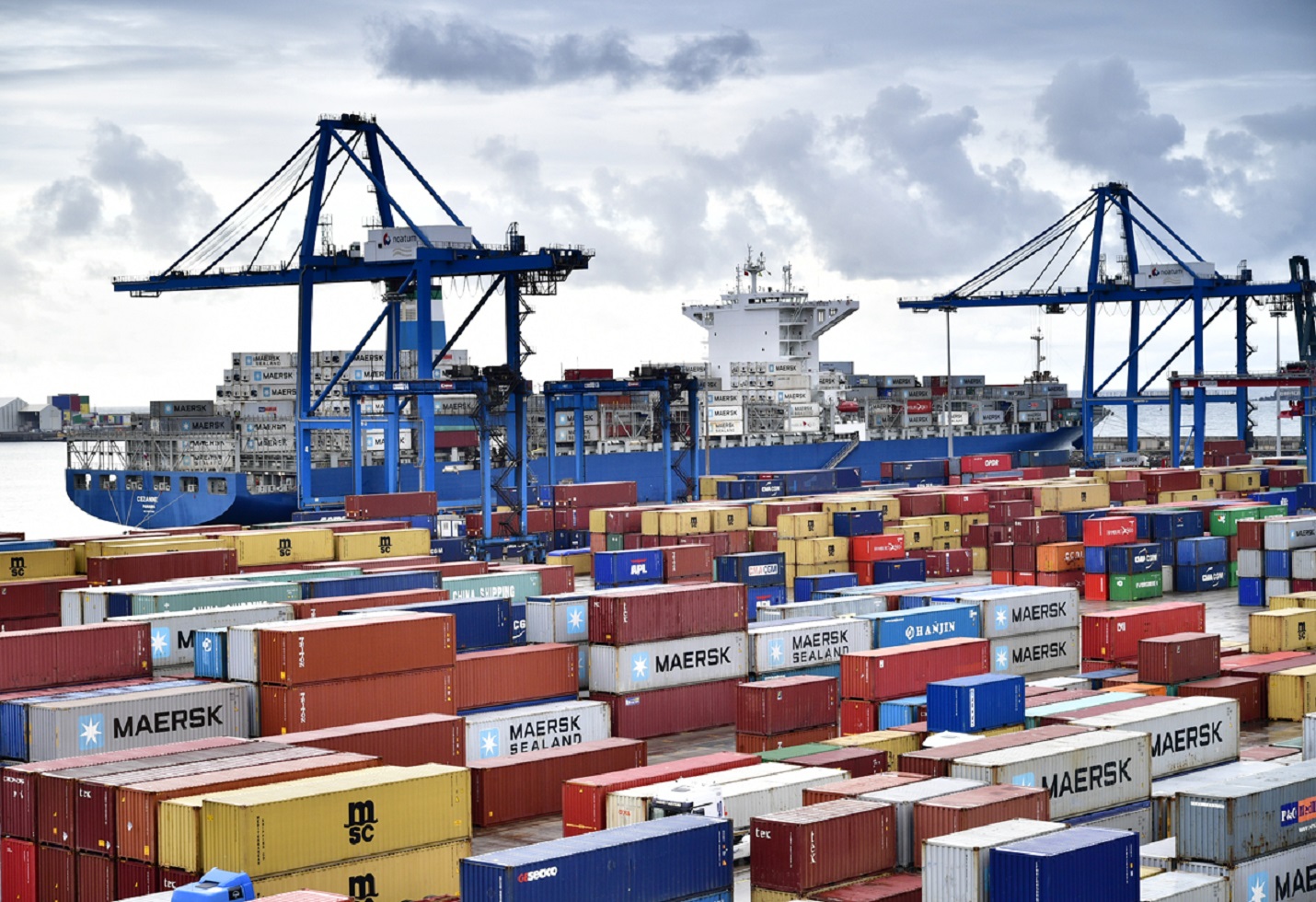Navigating Innovation: Tata Technologies in Engineering Excellence and Risk Mitigation
Tata Technologies Limited is an Indian multinational company that provides engineering and design services, product lifecycle management, manufacturing, and IT service management to the automotive and aerospace industries. It has a global presence, with offices in 19 countries.
Company Overview:
Tata Technologies, founded in 1989, has established itself as a prominent player in the field of engineering solutions. With a history spanning several decades, the company has built a reputation for delivering innovative and reliable services to its clients. Specializing in engineering solutions, Tata Technologies has become a trusted partner for some of the global leaders in the automotive and aerospace industries.
The company’s client portfolio includes renowned names such as Jaguar Land Rover, Ford, Fiat Chrysler Automobiles, Airbus, and Boeing, showcasing its ability to collaborate with major Original Equipment Manufacturers (OEMs). Over the years, Tata Technologies has likely contributed significantly to the development and advancement of technology in the automotive and aerospace domains. The company’s focus on innovation and engineering excellence has likely played a pivotal role in shaping its success and maintaining long-term relationships with industry leaders.
Tata technologies core services:
1. Engineering, Research and Development (ER&D):
Tata Technologies’ ER&D services are focused on assisting global manufacturing customers throughout the product development lifecycle. This involves conceptualization, design, and development to create improved and sustainable products. The emphasis on sustainability suggests a commitment to environmentally conscious engineering solutions.
2. Digital Enterprise Services (DES):
The Digital Enterprise Services are tailored to help manufacturing customers leverage technology for various aspects of their operations. This includes identifying and deploying technologies, tools, and solutions to enhance manufacturing processes, service delivery, and overall product realization. This aligns with the modern trend of digital transformation in manufacturing.
3. Education Offerings:
Tata Technologies collaborates with universities and governments to contribute to the education sector. The company plays a role in equipping the next generation of engineers with the skills needed in the manufacturing industry. Additionally, offering a digital learning system to businesses and individuals reflects a commitment to addressing training needs in a dynamic digital environment.
4. Products and Value Added Reselling (VAR):
Tata Technologies assists its customers in identifying and deploying product development software from partners. Acting as a Value Added Reseller (VAR), the company adds value to these products, helping customers manufacture, service, and bring superior products to market successfully
Tata Technologies Industries: Driving Excellence Across Sectors-
Automotive Innovation:
Navigating the automotive industry’s radical transformation, Tata Technologies delivers end-to-end solutions. From electric vehicle engineering to digital transformation, their expertise spans the entire automotive value chain. They accelerate product launches, optimize operations, and enhance customer experiences, shaping a connected, autonomous, shared, and electric future.
Global Industrial Heavy Machinery (IHM):
In a shifting Industrial Heavy Machinery landscape, Tata Technologies provides comprehensive solutions. Their offerings, covering engineering, manufacturing, and customer experience, empower manufacturers to meet global infrastructure demands efficiently. Leveraging digital enterprise solutions, they minimize production costs, accelerate time to market, and guide their clients towards Industry 4.0.
Aerospace Advancements:
As the aerospace industry undergoes a transformative phase, Tata Technologies contributes cutting-edge solutions. Their aerospace portfolio spans engineering, manufacturing, and customer services, addressing the industry’s need for innovative, high-precision products. With advanced technologies and a focus on customer experiences, they redefine excellence in aerospace engineering and services.
Risk factors associated with tata technologies:
Dependence on key clients: Tata Technologies’ business is strongly reliant on a few important customers, notably Jaguar Land Rover, Ford, Fiat Chrysler Automobiles, Airbus, and Boeing. If any of these clients reduces their spending or switches to a new provider, Tata Technologies’ revenue and profitability could suffer significantly.
Exposure to global economic conditions: As Tata Technologies works in a global market, it is subject to swings in global economic conditions. A faltering global economy could result in lower demand for Tata Technologies’ services, significantly impacting its financial performance.
Technological advances: The engineering services business is continually evolving, with new technologies arriving on a regular basis. To be competitive, Tata Technologies must be able to keep up with these changes. If it does not, it risks losing clients to more innovative competition.
Currency fluctuations: Tata Technologies operates in a number of countries worldwide, and its revenue is denominated in a number of currencies. Exchange rate fluctuations might have an impact on the company’s performance.
Regulatory risks: In the countries where it works, Tata Technologies is subject to a range of rules. Changes in this legislation may have an impact on the company’s ability to operate in certain markets.
Project risks: Projects at Tata Technologies are frequently difficult and require a high level of technical competence. If a project fails to reach its goals, it may result in financial losses and damage to the company’s reputation.
Talent acquisition and retention: Tata Technologies’ services are delivered by a competent staff. If the organization is unable to attract and retain great personnel, its ability to compete in the market may suffer.
Financial investment: The corporation invests in unsecured debt instruments on occasion, including those with interest rates lower than the market rate, which has an impact on profitability. These investments include a variety of financial products. Inter-corporate deposits are held solely by the Promoter and are repayable on demand.
Cash flows and projections: Recognizing previous negative cash flows and projecting future negatives, the business recorded negative net cash flow from operational activities for Fiscal 2022 and the six-month period ending September 30, 2023. The negative operating cash flow in Fiscal 2022 was related to the use of client advances to pay vendors. Similarly, the latter period’s negative cash flow was caused by greater advances to suppliers.
Tata technologies partnerships:
1. Mobility in Harmony (MIH) Consortium: Tata Technologies is a member of the Mobility in Harmony (MIH) consortium, indicating its commitment to engineering sustainable mobility solutions and contributing to the acceleration of innovation in future mobility.
2. PTC: Tata Technologies collaborates with PTC, a company focused on making digital transformation a reality for businesses. In this partnership, Tata Technologies serves as a system integrator (SI) and a reseller for PTC, likely working on customized innovations that deliver maximum business advantage.
3. Kovair: Tata Technologies has a partnership with Kovair, a company specializing in enabling digital transformation through DevOps solutions and enterprise tools integrations for embedded software development. As a system integrator (SI) and reseller for Kovair, Tata Technologies likely plays a role in integrating Kovair’s solutions into their services.
4. Codincity: Codincity is Tata Technologies’ cloud and digital partner. This partnership suggests that Tata Technologies is harnessing the power of the cloud to support its customers’ digital transformation journeys. The collaboration with Codincity may involve utilizing cloud technologies to enhance Tata Technologies’ offerings.
5. Logility: Tata Technologies serves as a system integrator (SI) for Logility, focusing on delivering a digital and sustainable supply chain. This partnership aims to empower customers to grow and compete through advanced supply chain solutions.
6. Dassault Systèmes: Tata Technologies acts as a reseller for Dassault Systèmes, a company known for developing product development applications. This collaboration enables Tata Technologies to offer a range of tools and solutions that help customers thrive throughout the entire product lifecycle.
7. SAP: Tata Technologies has a partnership with SAP, where it functions as a sell partner. SAP is renowned for transforming enterprise processes, enhancing customer satisfaction, and enriching employee experiences. Through this collaboration, Tata Technologies likely provides SAP solutions to its clients.
8. Siemens: Tata Technologies plays a dual role as a system integrator (SI) and a reseller for Siemens. Siemens is recognized for empowering companies to embrace complexity, leveraging it to enhance productivity and gain a competitive advantage. This partnership positions Tata Technologies to integrate Siemens’ solutions and serve as a reseller.
The image added is for representation purposes only










